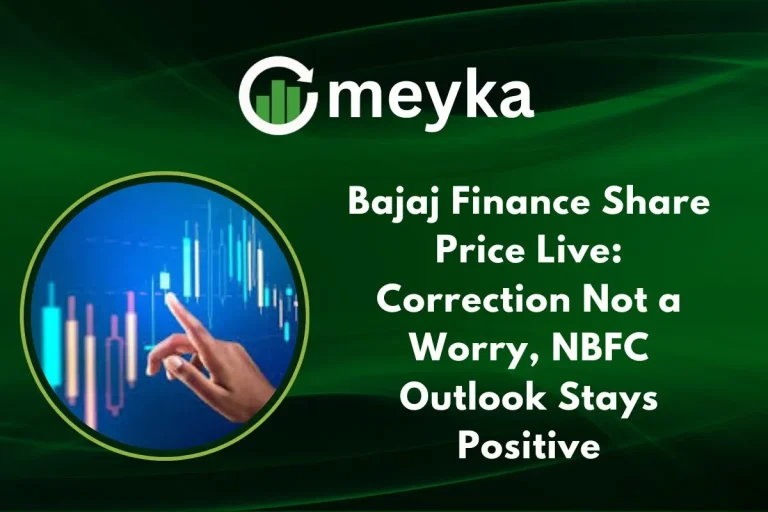Tata Motors Demerger Explained: CV Share Entitlement, Swap Ratio, and Listing Timeline
Tata Motors has triggered one of the biggest structural changes in India’s auto industry. The company has split its large vehicle business into two separate listed entities: one covering Passenger Vehicles (PV) (including electric vehicles and its global brand) and the other covering Commercial Vehicles (CV) (trucks, buses, heavy vehicles). The demerger signals a strategic shift. We see it as a move to sharpen focus, unlock value, and give each business its own identity. For shareholders and the market, it opens a new chapter.
What is Tata Motors’ Demerger?
In simple terms, a “demerger” means Tata Motors is formally separating its two major business divisions into independently listed companies. The PV business will house the car-side, EVs, and luxury-brand interests. The CV business will handle the heavy-vehicle side: trucks, buses, and commercial solutions. According to reports, the demerger became legally effective from 1 October 2025.
This means that the old Tata Motors Ltd will now give way to:
- A newly-named entity for the commercial vehicles business (CV).
- The existing passenger vehicles business, rebranded and separated, bearing the PV, EV, and luxury business lines.
This is more than a name change; each part will now have its own balance sheet, strategy, and investor universe.
Key Objectives Behind the Demerger
Why is Tata Motors doing this? Some of the main reasons are:
- Sharper business focus: The PV side faces fast-moving trends (EVs, design, global luxury brands) while the CV side is heavy asset-driven and cyclical (dependent on infrastructure, logistics, commercial spend). Splitting lets each focus on what it does best.
- Better capital allocation: The two business lines have very different capital needs. The EV & luxury side may attract growth-oriented capital; the CV side may need more stability, industrial support. Separate entities make it cleaner.
- Improved investor clarity and valuation: Previously, one combined company made it harder to value each line. With a split, investors and analysts can more easily assess the PV side and the CV side independently.
- Operational agility: With independent leadership and strategy, each part can move faster. The PV side can chase EV roll-outs and luxury margins; the CV side can focus on fleet solutions and infrastructure demand.
CV Share Entitlement: What Investors Need to Know
A very important part for existing shareholders is how they will receive shares in the newly carved-out CV entity. Here’s the breakdown:
- The record date to determine eligibility was 14 October 2025. If you were a shareholder on that date, you qualify.
- The entitlement is 1:1, meaning for every one share of Tata Motors you held, you will receive one share in the newly formed commercial vehicles entity.
- The way to think of it: Suppose you owned 100 shares of Tata Motors before the record date. After the split, you will continue holding your 100 shares in the PV-entity, plus you will receive 100 shares of the CV entity. Your total ownership is effectively unchanged, though now split across two companies.
- Importantly: There is no dilution of your ownership. The value you hold across both entities is intended to carry over from the old combined company.
This kind of entitlement ensures existing shareholders don’t lose out; instead, they get exposure to both businesses.
Swap Ratio Explained
In many demergers, there is a swap ratio to determine how many shares of the new entity you get for old shares. In Tata Motors’ case:
- The swap ratio is 1:1 (one new-CV share for one old Tata Motors share).
- Why this ratio? Because the board has set it so that ownership remains symmetric and no one loses proportion. It reflects the relative size of both businesses and aims for fairness.
- For investors, this means: your portfolio now holds two stocks: the PV entity and the CV entity, each in equal numbers (if you held one old share, you now hold one of each).
- In effect, the “value” you held previously is now distributed across two stocks. The market may apply different valuations to each, depending on growth prospects and business model.
Listing Timeline
Timing is key in demergers, when the new entity will trade, how the old stock adjusts, etc. For the Tata Motors demerger:
- The effective date (legal separation) is 1 October 2025.
- Record date for eligibility: 14 October 2025.
- After the record date, the PV entity began trading ex‐CV (meaning the old combined share now reflects only the PV portion).
- The CV entity is expected to be listed in early November 2025 (once regulatory approvals and listing steps are complete).
- The stock exchanges have made adjustments (such as special pre-open trading sessions) to manage the transition.
For shareholders, this means you must hold shares on the record date, and after listing, you’ll see two separate stocks.
Impact on Share Price & Valuation
What has been the market reaction so far, and what could happen next?
- On the record date when the PV side began trading on an ex-CV basis, the share price of the PV entity opened sharply lower, not because of value loss, but due to the structural adjustment. For example, the old combined Tata Motors share, which closed around ~₹660 (approx) prior to de-merger, er shifted to around ~₹400 for the PV entity on the first day.
- Analysts expect the PV entity (with high growth and EV focus) to command higher valuation multiples in the future. The CV side might trade at a more stable/cyclical multiple given its heavy-asset and infrastructure-linked nature.
- The separation may allow each business to be re-rated on its own merit: for example, global EV investors may value the PV side differently; industrial / infrastructure investors may focus on the CV side.
- Some short-term volatility is expected until the CV business lists and the market fully prices both entities. Index adjustments, fund rebalancing, and investor positioning will all play a role.
So, while the headline share price may shift mechanically, the underlying ownership and value remain intact, at least in principle.
Benefits for Shareholders
From a shareholder’s perspective, the demerger offers several advantages:
- Value unlocking: By separating the businesses, the market may assign more appropriate valuations to each. If one business is undervalued in the combined form, it can get “unshackled”.
- Clearer growth story: The PV entity has high growth potential (EVs, JLR, global reach), and the CV entity can focus on fleet, commercial logistics, and infrastructure demand. Investors can choose which story appeals more.
- Improved transparency: With separate financials, earnings, and strategies, it becomes easier to understand how each part is doing.
- Strategic focus: Each business can now craft its own roadmap, hire leadership, and partner differently without worrying about conflicting priorities.
- Flexibility for portfolio: Once both entities trade separately, investors could choose to hold one or both companies, depending on risk profile and interest.
In short, for long‐term oriented shareholders, we see this as a positive structural move rather than a disruption.
Potential Risks & Challenges
However, no change comes without caveats. Some of the risks to keep in mind:
- Execution risk: Splitting a large company into two is complex: separating assets, management teams, systems, and culture. Any misstep may hurt cost efficiency or synergy.
- Market timing risk: The demerger happens during a time of macro uncertainty (global inflation, supply chain constraints, commodity inflation), which could impact both CV and PV businesses.
- Cyclical nature of CV business: The CV side depends heavily on infrastructure spending, commercial fleet demand, and global logistics growth. If that slows, the CV entity could be hit.
- EV & luxury risk: On the PV side, EV adoption, regulatory changes, and global competition (including for JLR) mean growth may be challenging.
- Short‐term volatility: The transition may cause fund re‐balancing, index adjustments, and investor changes, which may cause price swings irrespective of fundamentals.
So while the move is strategic and well-planned, we recognise it is not risk-free.
Conclusion
In sum, the Tata Motors demerger marks a major evolution in one of India’s flagship automotive companies. By bifurcating the business into a Passenger Vehicles/EV/Luxury entity and a Commercial Vehicles entity, the company is betting on sharper focus and clearer value creation. The 1:1 share entitlement, the listing timeline targeting early November 2025, and the structural clarity all support this vision. For shareholders, we believe this is not simply a split, but a doorway to two distinct value stories under one brand umbrella. The journey ahead will be shaped by how each business executes and how the market rewards that. As the CV side lists and independently trades, the full impact of the move will become clearer.
As investors or watchers of the automotive sector, this restructuring of Tata Motors is worth tracking carefully. We expect it to make waves in how India’s auto industry evolves, and how investors evaluate automotive stocks going forward.
FAQS
After the demerger, you will keep your Tata Motors shares. You will also get the same number of shares in the new commercial vehicle company. Your total value stays split between two listed companies.
The demerger ratio is 1:1. This means for every one share you already own in Tata Motors, you will receive one share in the new commercial vehicle company.
Shares are given to investors based on how many shares they already hold. If you held Tata Motors shares before the record date, you will automatically get the new shares in the same ratio.
Disclaimer:
The content shared by Meyka AI PTY LTD is solely for research and informational purposes. Meyka is not a financial advisory service, and the information provided should not be considered investment or trading advice.






